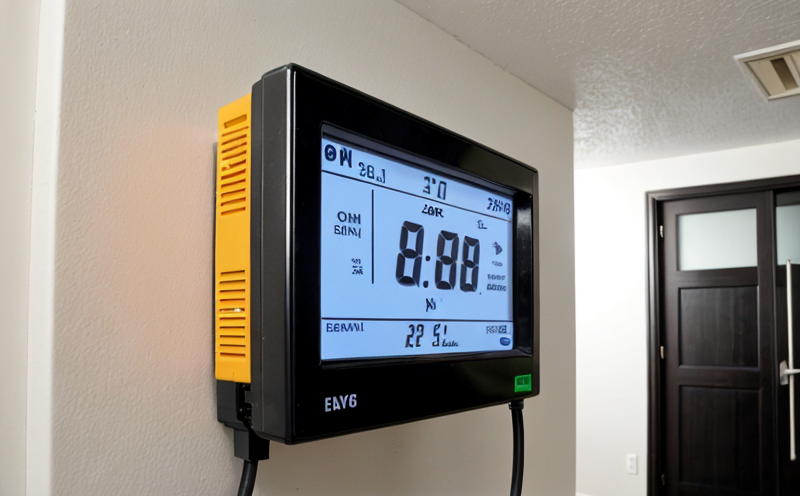ASTM D358 Building Insulation Efficiency Testing
The ASTM D358 standard provides a standardized method for testing building insulation efficiency. This service is essential for ensuring that the insulating materials used in construction meet the required standards and perform as expected under various environmental conditions.
In this test, specimens of the insulating material are subjected to controlled heating or cooling cycles. The thermal resistance (R-value) and air permeance are measured to evaluate the insulation's performance. This testing is crucial for architects, engineers, and construction professionals who need to ensure that their designs meet energy efficiency standards.
The ASTM D358 method helps in understanding how effectively an insulating material can prevent heat transfer through a building envelope. The test apparatus typically includes a climate chamber where the specimens are placed under specific conditions. The R-value is calculated based on the temperature difference and heat flow through the specimen. This value indicates the insulation's ability to resist heat flow.
Air permeance testing, another part of ASTM D358, measures how easily air can pass through the insulating material. High air permeability can lead to increased energy consumption due to conditioned air escaping from the building. This test is important for ensuring that the insulation is not only thermally efficient but also airtight.
The results of these tests are critical for quality assurance and compliance with various regulations such as ASHRAE, LEED, and others which set minimum performance requirements for building materials. By adhering to ASTM D358, laboratories ensure that their clients receive accurate and reliable test results that can be used in design, specification, and regulatory compliance.
For quality managers, this service provides a means to monitor the consistency of insulating material performance over time. Compliance officers can use these tests to verify that products meet local, national, or international standards. R&D engineers benefit from ASTM D358 by gaining insights into the effectiveness of new insulation technologies.
ASTM D358 testing is a cornerstone for ensuring the energy efficiency of buildings. It allows for the comparison of different insulating materials and helps in selecting the most effective option for specific applications. This service not only aids in meeting regulatory requirements but also contributes to sustainable building practices by promoting the use of high-performance insulation.
Quality and Reliability Assurance
- Thermal Resistance (R-value): Ensures the insulation effectively resists heat transfer. This is critical for maintaining optimal indoor temperatures and reducing energy consumption.
- Air Permeance: Measures the ability of air to pass through the insulating material. High permeability can increase energy costs by allowing conditioned air to escape.
- Compliance with Standards: Ensures that all tests meet the requirements set forth in ASTM D358 and other relevant standards like ASHRAE, LEED, and ISO 13264-1.
- Data Accuracy: Rigorous quality control measures ensure the reliability of the test results. This is essential for making informed decisions about material selection and building design.
The accuracy and consistency of ASTM D358 testing are paramount for ensuring that buildings meet their energy efficiency goals. By adhering to these standards, laboratories can provide clients with confidence in the performance of the insulating materials used in construction projects.
Environmental and Sustainability Contributions
The ASTM D358 testing service plays a vital role in promoting sustainable building practices. By ensuring that insulation materials are efficient, these tests help reduce the overall energy consumption of buildings. This reduction leads to lower greenhouse gas emissions and contributes to environmental sustainability.
In addition to reducing carbon footprints, ASTM D358 supports compliance with various green building certifications such as LEED and BREEAM. These certifications recognize projects that demonstrate a commitment to sustainable design and construction practices.
Through the use of efficient insulating materials, buildings can achieve better indoor air quality and enhanced comfort levels for occupants. This not only improves health outcomes but also contributes to a more resilient built environment.
The ASTM D358 testing process is part of a broader strategy aimed at reducing waste and resource consumption in construction projects. By selecting the most appropriate insulation materials, builders can minimize the environmental impact of their projects while maximizing energy efficiency.
Competitive Advantage and Market Impact
The ASTM D358 testing service offers significant competitive advantages to businesses involved in building insulation. By providing accurate and reliable test results, laboratories can help clients stay ahead of regulatory changes and market trends.
Compliance with ASTM D358 is not only a legal requirement but also a key differentiator for builders who want to demonstrate their commitment to sustainability. This can enhance the reputation of companies involved in green building projects, making them more attractive to environmentally conscious clients.
The results from ASTM D358 testing can be used to inform decisions about material selection and design optimization. This allows businesses to offer competitive pricing while still delivering high-quality products that meet or exceed industry standards.
By leveraging the insights gained from ASTM D358 testing, companies can innovate and introduce new materials or processes that further enhance energy efficiency in buildings. This continuous improvement cycle helps maintain a leadership position in the market.





